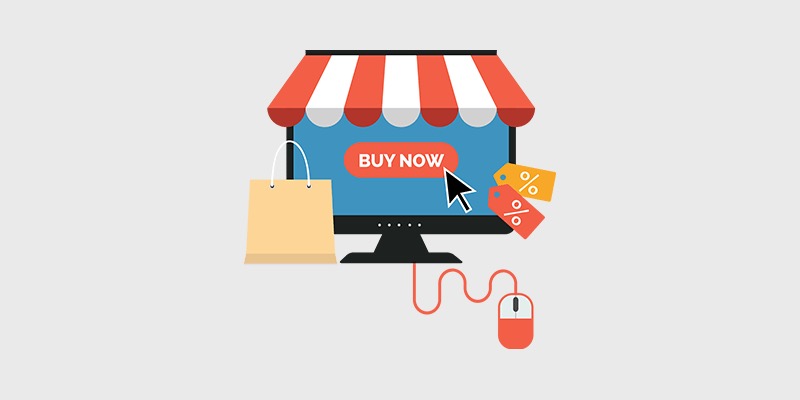When we look around, we will experience digital products influencing us in every aspect of life. These products are endured in the form of music, online courses, software, videos, eBooks, templates, and much more.
Digital products provide an excellent alternative for creative talents, making it a lucrative business as it is estimated that the digital product market will grow by over $594 billion by 2025. Digital products are the most effective assets for online businesses, with a great potential to generate enormous income streams and require little upkeep.
Unlike physical products, selling digital products will provide you with several advantages. Large profit margins, the absence of production, inventory, importing, local business rules, and logistics concerns are only a few of the main advantages. You have to create digital products once and watch the sales surge as the market for digital products is growing exponentially.
Compared to physical products, digital products are:
- Easier to create
- Highly sustainable
- Never short of supply
- Smoother to disseminate
- Typically more lucrative
Let us walk you through the do’s and don’ts to consider when selling digital products but before we get started, let us delve deeper into understanding what digital products are.
What are digital products?

Digital products are non-physical assets or pieces of media that are purchased and downloaded online. You need not maintain a physical inventory of these products. Digital products include various items like course material, e-books, PDFs, podcasts, music files, MP3s, and videos, in addition to apps, graphic designs, plugins, and many more. With a significantly huge market to explore, digital products are versatile sales tools and have the potential to build your brand and generate a passive income for your business in the long run.
Digital products are very appealing to sell since they offer numerous benefits like high-profit margins, minimal overhead costs, the potential to automate, and flexible options to incorporate these products into your business. Selling digital products is an excellent way to generate revenue while minimizing expenses. When you create a virtual product like a book, video, or software program, you will be able to sell many copies of that product without recreating it and avoid the costs and problems related to manufacturing, managing inventory, and shipping them.
However, digital products come with specific challenges for you to watch out for—competing with free content, susceptibility to piracy or theft, and restrictions on how you sell digital products are some of them to consider. You must overcome the challenges by employing the right tools to design your digital product business.
Do’s and don’ts when selling digital products online
Creating a digital product involves hard work but the time and effort invested are worthwhile when you consider the plus points of these intangible products. Many business owners create their entire businesses selling digital products, as these products have the appeal of getting repeatedly sold to different users once they are created. There is an excellent probability that your business will succeed if you have a reliable procedure for product creativity and marketing.
If you are interested in selling digital products, here are some tips to follow:
Do’s for selling digital products online
1. Define your target market

Selling digital products online involves immense brainstorming and research to validate your idea to create your digital product. Once you have validated your idea to create something depending on your knowledge and skills, it is time to determine your target audience. Identifying your target audience will help you know your audience’s needs and design a customized product for them.
Identifying your target market and knowing how to sell digital products online is vital to the success of your digital products. While it is always alluring to sell your product to everyone, the truth is that you will have to select your target audience and start selling them and refine your marketing efforts and communication in accordance with them.
Knowing everything about your target market, like their geographical locations, profession, and their choices will give you an advantage over your competition in your niche.
2. Launch a campaign to generate leads
Once you have chosen your ideal digital product after proper research and deciding on your target market—you have the essential step to follow: promote it to your target audience and drive sales.
There are various ways to promote your digital product through internet marketing to generate sales—some methods include:
- Paid advertising on Google and Facebook to generate leads for conversion
- Content marketing to create and share engaging content to entice and convert leads into customers
- Search engine optimization to optimize your website and content to make it rank higher in SERP
- Affiliate marketing to promote your offers in exchange for a commission or fee to third parties
- Influencer marketing to promote your products or offers through influencers
- Email marketing to collect potential customers’ contact information and groom them into paying customers.
Your conversion rate will increase when your brand authority rises using the proper techniques since consumers are more inclined to buy your digital products when they see you as trustworthy.
3. Create an online store

You have Amazon and eBay as existing platforms among the different choices to sell your digital products. Shopify, one of the best platforms, offers an option to build your website and sell your digital products online. Building your own website will offer you a complete say over the appearance of your online store, and your customers will stay focused on sponsored products. With Shopify eCommerce website builder, you will be able to customize your store. Shopify app store has unlimited apps that will allow you to customize the functionality of your website per your requirements.
Selling your digital products on platforms like Amazon will be an easy start with minimal effort and cost. With this platform, your product will have the highest exposure to potential customers compared to any other options—determine your platform choice after weighing all the available choices.
4. Offer basic features of your digital product for free
The Freemium model works primarily with digital products and has been around for a while, adopted by many well-known companies. In this model, you must provide a sample of a portion of your paid material to your clients. They will decide to buy the complete version if they have a proper understanding of your product or service.
If you want to show off the value of your items even more, consider comparing your free and premium versions using numbers. A freemium strategy is perfect for communicating the benefits of your digital offering. Let potential customers try it out for free to see these benefits for themselves.
Don’ts for selling digital products online
1. Don’t give up soon
If your digital product does not sell up to your expectations in the beginning, you must not give up—consider your failure as the stepping stone to your success and growth. Learning that failure in getting the desired results is an opportunity to grasp more and build your brand is vital.
Keep working consistently on the strategies you have designed for selling your digital product and analyze which ones work better to get sales for your product. Strategies not working must be improved to fetch the desired results.
2. Don’t stop the promotion of your digital product

No product sells itself after you have created it—consistent marketing and promotional efforts are essential for effectively selling your digital products.
Whatever efforts you have put into developing your digital product must not be wasted. It needs consistent promotion on social media, ad networks, email marketing campaigns, SEO, and influencer marketing to increase sales and significantly fetch desired fruits.
To have increased traffic and sales of your website’s visitors, you need to follow these four optimization tips consistently.
- Use high-quality images & videos
- Implement SEO techniques
- Craft powerful and clear CTAs
- Benefit from paid advertising
3. Never rush the creation of your digital product
The results of hastening the development of your digital product to drive sales will be fatal. Rushing through the creation of your product will result in a poor or incomplete product offering and reduced or no sales.
Wanting to see your digital product succeed and grow in this competitive market, you must invest time to create and test it properly before releasing it to your potential customers. Doing so will ensure client happiness, favorable evaluations, referrals, and more sales.
4. Don’t ignore automating the process
Employing automation tools and apps is essential to simplify your workflow and easily handle tasks like digital product delivery. When some processes aren’t automated, delivering products, making bills, and contacting consumers will take a lot more time and effort. So, it is essential to employ automation tools for a seamless workflow.
Selling digital products: The new way of business
Whether you are a professional or a novice online merchant, selling digital products is easy and significantly profitable. These products have the potential to complement your existing physical products or stand on their own to make for a successful online business—all you’ll need is to walk the extra mile in creativity and invest time to create your product and online strategy.
To be successful and drive significant sales volumes, you must avoid common mistakes that cause setbacks. You need to employ tools and services to streamline processes and make them much more straightforward to drive sales.
Author Bio:

Surya Ranjan Pandita is a content marketer. He is always on the lookout for new optimization strategies and loves to create actionable content.







